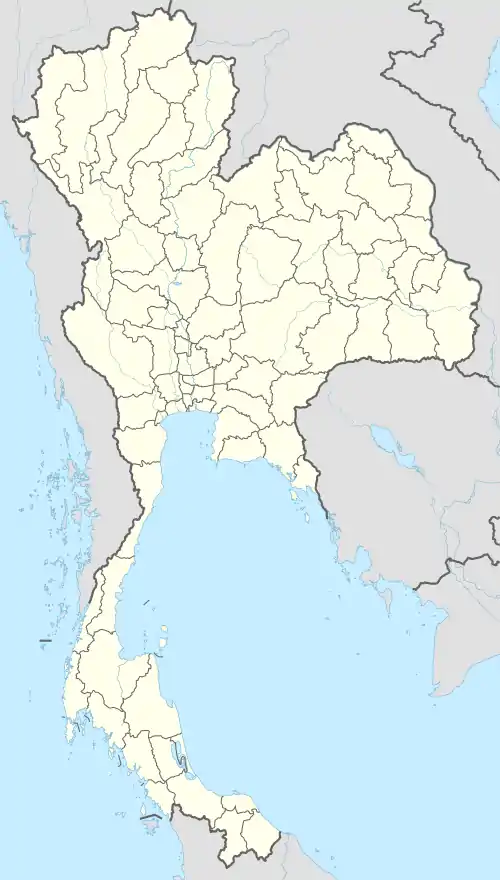Pha Taem National Park
Pha Taem National Park (Thai:อุทยานแห่งชาติผาแต้ม) is a national park on the Mekong River in Ubon Ratchathani Province, northeast Thailand.[1] Phou Xieng Thong National Protected Area in Laos is on the opposite side of the river.
| Pha Taem National Park | |
|---|---|
| อุทยานแห่งชาติผาแต้ม | |
IUCN category II (national park) | |
 Rock art includes both humanoid and animal figures like the Giant Mekong Catfish | |
 Location in Thailand | |
| Location | Ubon Ratchathani Province, Thailand |
| Coordinates | 15°24′N 105°31′E |
| Area | 340 km² |
| Established | 1991 |
It is notable for its Dipterocarp forest cover and for extensive rock art on cliffs above the Mekong. The art is estimated to be 3,000 years old. The park also has several examples of mushroom rocks[2] as well as the largest flower field in Thailand.[3]
Pha Taem National Park is a popular destination for the first sunshine of the New Year to fall on Thailand.[4][5]
Flora and fauna
The park is covered by Dipterocarp forest with Shorea obtusa, Shorea siamensis, and Dipterocarpus obtusifollus the dominant species. There are some dry evergreen forests near streams.[1]
The park is habitat for Siamese hares, barking deer, civets, palm civets and wild pigs and serow, which migrate from Laos in summer.[1] In 2005, specimens of a new frog species, Fejervarya triora, were discovered in the park.[6]
Gallery
 Mushroom-shaped rock pillars
Mushroom-shaped rock pillars Cha Na Dai Cliff, which receives the first sunshine of the year in Thailand, overlooking the Mekong River and Laos beyond
Cha Na Dai Cliff, which receives the first sunshine of the year in Thailand, overlooking the Mekong River and Laos beyond Petroglyphs in Pha Taem National Park
Petroglyphs in Pha Taem National Park
References
- "Pha Taem National Park". Department of National Parks (DNP) Thailand. Archived from the original on 17 November 2015. Retrieved 16 November 2015.
- "Pha Taem National Park - Thailand". Archived from the original on 2017-10-28. Retrieved 2012-01-28.
- Pha Taem National Park - Lonely Planet
- "อุบลฯ ชวนนักท่องเที่ยว "รับตะวันใหม่ก่อนใครในสยาม" ปี 2561 ที่ผาแต้ม". Guideubon (in Thai).
- "อุบลฯชวนนักท่องเที่ยวขึ้นผาแต้ม "รับตะวันใหม่ก่อนใครในสยาม" วันปีใหม่ปี 60". Matichon (in Thai). 2017-12-19.
- Chuaynkern, Yodchaiy; Salangsingha, Nakorn; Makchai, Sunchai; Inthara, Chantip; Duengkae, Prateep (2009). "Fejervarya triora (Amphibia, Ranidae): first description of the adult male and recent distribution records". Alytes. International Society for the Study and Conservation of Amphibians. 27 (1): 13–24. Retrieved 13 June 2017.